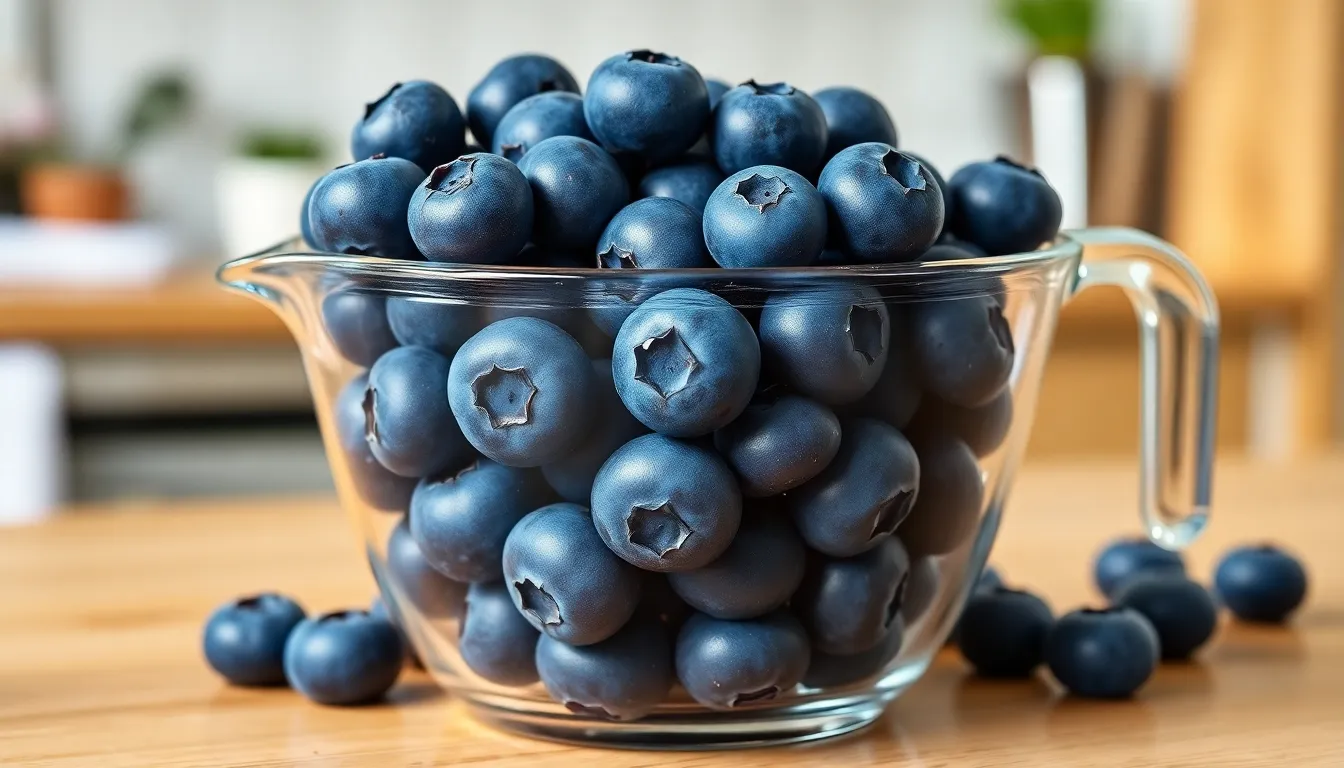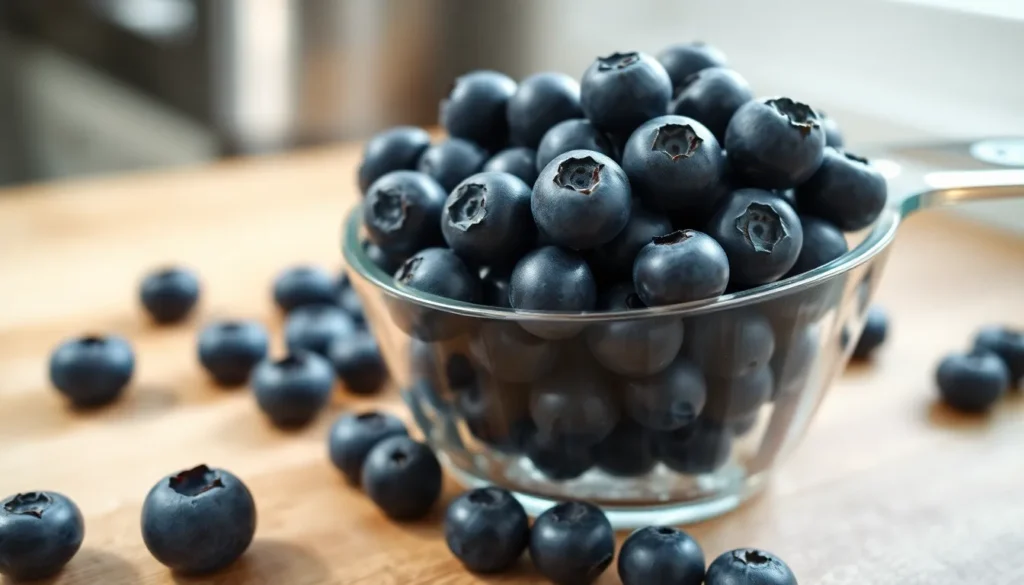Blueberries are tiny bursts of flavor and nutrition, but how many of these delightful little gems fit into a cup? It’s a question that’s puzzled many a breakfast enthusiast and smoothie aficionado. Whether you’re whipping up a berry smoothie or baking a pie that could make your grandma weep with joy, knowing the right amount of blueberries is crucial.
Understanding Blueberry Measurement
Measuring blueberries accurately ensures consistent results in recipes. It’s essential for maintaining flavor and nutrition, especially in dishes like smoothies and baked goods.
Importance of Accurate Measurements
Accuracy in measuring blueberries impacts the overall dish quality. Too few blueberries can lead to a lack of flavor, while too many can overwhelm other ingredients. This balance contributes to the desired taste and texture. In baking, for instance, precise blueberry measurement affects the moisture level and sweetness. Consider using a kitchen scale for the most reliable results, as this method provides exact weight. One cup of blueberries typically weighs around 148 grams. This precision aids in nutrition tracking as well.
Common Measurement Units
Blueberries are measured in various units, with cups being one of the most popular. A standard cup contains approximately 145 to 150 blueberries, depending on their size. Sometimes, measurements are provided in ounces, with one cup equalling about 5 to 6 ounces. Recipes may specify different amounts, such as pints or quarts, particularly in larger batches. Understanding these units helps in scaling recipes up or down. Familiarity with conversions enhances efficiency in the kitchen.
How Many Blueberries in a Cup?

Measuring blueberries accurately influences the outcome of various recipes. One cup typically contains around 145 to 150 blueberries.
Average Blueberries Per Cup
On average, a cup of blueberries includes approximately 145 to 150 berries. This measurement can vary slightly based on how the blueberries are packed. A tightly packed cup might hold more berries than a loosely filled one. This range of blueberries equals about 148 grams, making consistency important in recipe preparation.
Variations Based on Size
Blueberries come in various sizes, which affects the number in a cup. Large blueberries may yield fewer berries per cup compared to smaller ones. Small blueberries can fit more into a cup, sometimes exceeding 150 berries. As a result, understanding these size variations helps ensure the desired flavor and texture in culinary creations. A scale can assist in achieving precise measurements for consistent results.
Health Benefits of Blueberries
Blueberries offer numerous health benefits, making them a valuable addition to any diet. Their vibrant color and sweet flavor complement a variety of dishes while providing essential nutrients.
Nutritional Value
A one-cup serving of blueberries contains approximately 84 calories. This serving provides about 21 grams of carbohydrates and 4 grams of dietary fiber. Packed with vitamins, blueberries contain vitamin C, vitamin K, and some B vitamins. They also include essential minerals like manganese and copper, which help maintain healthy bodily functions. Low in fat, these berries contribute to a balanced diet while offering plenty of energy.
Antioxidant Properties
Rich in antioxidants, blueberries stand out for their ability to combat oxidative stress. They contain a high level of anthocyanins that contribute to their deep blue color. These compounds help protect cells from damage associated with aging and disease. Research indicates that regularly consuming blueberries may lower the risk of chronic conditions like heart disease and diabetes. Including blueberries in the diet can enhance overall health and support the body’s natural defense mechanisms.
Tips for Measuring Blueberries
Accurate measuring techniques provide consistent results in recipes featuring blueberries.
Handling Fresh Blueberries
Fresh blueberries require gentle handling to avoid bruising. Rinse them under cool water just before use, ensuring all dirt and debris are removed. Allow them to dry on a paper towel. To measure, use a dry measuring cup, filling it lightly, without pressing down. A standard cup should contain around 145 to 150 blueberries, depending on their size. Storing fresh blueberries in a container with ventilation helps maintain their quality longer. Inspect berries for mold before usage, discarding any damaged ones.
Using Frozen Blueberries
Frozen blueberries offer convenience and a longer shelf life. They can be directly measured from the freezer without thawing. Use a dry measuring cup for accuracy, making sure to fill it without packing. Typically, one cup of frozen blueberries is about the same in weight as fresh, around 148 grams. Keep in mind that frozen blueberries may contain extra moisture, potentially affecting recipe textures if added directly. Using them in smoothies and baked goods yields excellent results.
Knowing how many blueberries fit into a cup is essential for anyone looking to enhance their culinary creations. Accurate measurements ensure that recipes achieve the perfect balance of flavor and texture. With a standard cup containing around 145 to 150 blueberries it’s clear that size and packing method play a critical role in achieving the desired results.
Incorporating blueberries into meals not only boosts flavor but also adds significant health benefits. Their rich antioxidant content supports overall well-being making them a smart choice for any diet. Whether fresh or frozen careful measurement and handling can elevate dishes while maximizing the delightful taste of these nutrient-packed berries.






